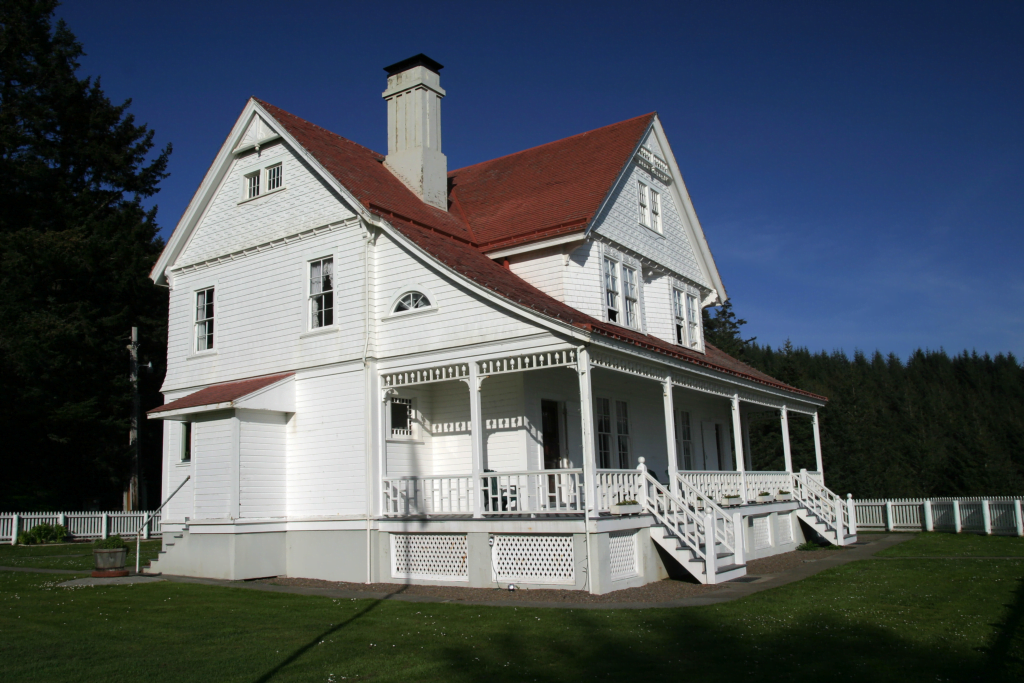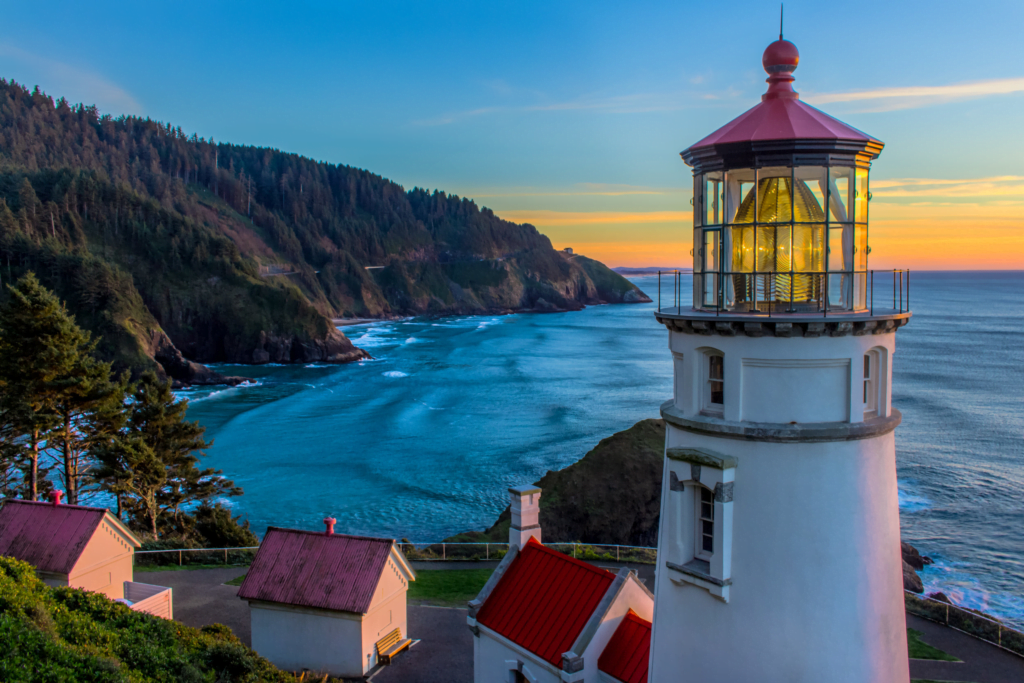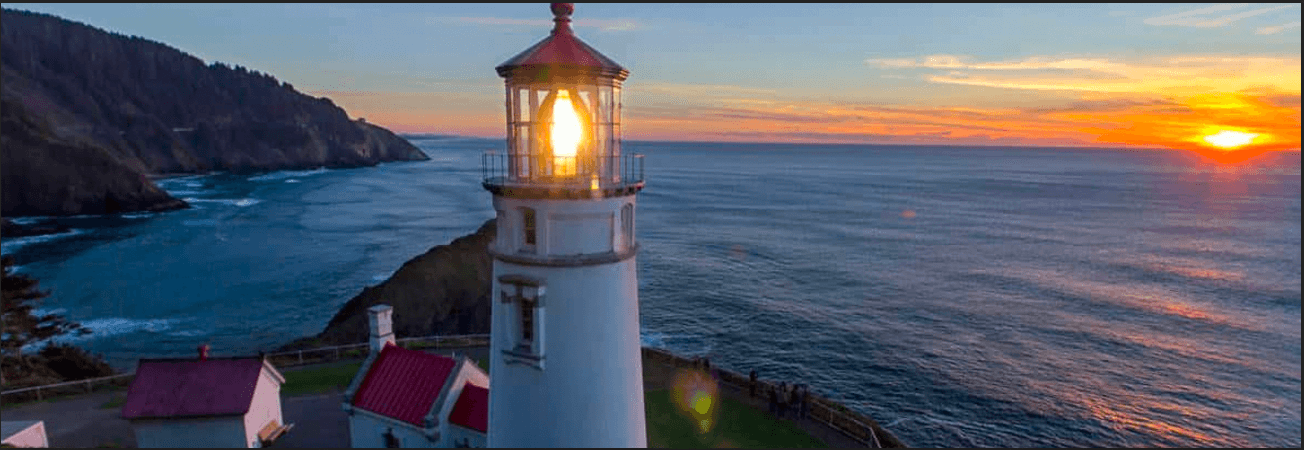I spent a good portion of my summers as a kid visiting my grandmother in Oregon. She lived in a tiny town on the coast with more National Historic Buildings than modern homes and a cemetery only a few blocks away holding graves that are older than the state itself. With thousands risking their lives to make it to the Oregon territory along the Oregon Trail I knew so well from growing up in Wyoming. Lighthouses always held a special place in my heart, driving along the Oregon Coast Scenic byway and seeing them appear out of the fog and expansive ocean to the left of us as we drove from Gardiner to Florence. The Heceta Head lighthouse was special, however, with that spectacular view– turning a corner on the highway and suddenly seeing it in the distance on a bay alcove, high above the water.

Even as a kid, I was obsessed with the paranormal. Precociously, I asked the tour guide if the place was haunted the very first time I visited. She looked at me with a wry smile and said “Oh yes, there are a lot of ghosts that stuck around here, especially in that building,” she pointed at the Queen Anne style keepers house that was now being furnished to welcome guests to stay at the newly renovated buildings.
Today, that lighthouse is a bed and breakfast, an emphasis on its past as a functioning lighthouse with keepers and attendants to keep the fire burning and save the ships as they sailed near the dangerous rocks. The Heceta Head has stood watching over the coast for over 100 years, being founded in 1894 and staffed for nearly its entire life until electric lights made the keepers obsolete. The name Heceta comes from an explorer who sailed up the Oregon coast in 1775, giving his name to the cape he’d discovered that would need a lighthouse in the future to prevent wayward travelers from running aground on the sharp rocks nearby.

The lighthouse is so remote that the homes built for the three lighthouse keepers and their families were their own community, far from the closest towns of Florence and Yachats. Many lighthouse keepers couldn’t handle the isolation and would move on to other postings. One head keeper named Olaf Hansen worked hard to make the Heceta Head community a thriving one, planting vegetable gardens and establishing a post office. For 15 years, Hansen made the isolated community feel like a home.
In the 1930s, much changed in the little cove’s community, with electricity and modern highways bringing modernity and visitors to the lighthouse. Electric lights eliminated the need for one of the light keepers, leaving two in place for other servicing to the lighthouse. Many changes came, including the takeover from the coast guard when the US ended their lighthouse servicing. During WWII, coast guard members lived up to their name and guarded the coast between Coos Bay and Newport from the vantage point of the Heceta Head.

For three decades between the 1970s and 1990s, the lighthouse and its buildings were leased as a satellite campus of Lane Community College, After its inclusion in the National Historic Landmarks registry in 1978, other uses were proposed for the land with the bed and breakfast being the most feasible option.
The most active ghost said to haunt the Heceta Head lighthouse is a woman they affectionately know as Rue. The young woman has silvery blonde hair with a dark colored dress, and she’s seen all over the cove– Some believe she was a lightkeeper’s wife, or tragically, a woman whose children drowned in the nearby cove’s beach. Unfortunately, those tales are not mutually exclusive, as tragedy wasn’t surprising in the remote working areas. Rue is seen walking the grounds looking for something, those who stay in the bed and breakfast have reported her presence in the lightkeepers house.

Stories are told about Rue’s anger during the renovation of the keeper’s house into its form as a bed and breakfast, with her angrily setting off a fire alarm as the home was being painted. The painter even stopped to take the batteries out of the smoke detector, but that didn’t stop the piercing siren from disrupting his sleep. After a window was broken and being repaired, workmen claimed to hear scraping sounds on the second floor, the next morning they found the broken glass organized into a tight pile on the ground. Others reported losing tools from their tool belt while working, and a close-up encounter with Rue in the attic of the keeper’s house, with her disappearing behind a corner– with nowhere for a living person to have gone.
While the haunting is certainly part of the appeal, the lighthouse on the high hill is also known as a beautifully historic and significant settlement within the history of the Oregon Coast. Remote, beautiful, and tragic, the Heceta Head Lighthouse still shines brightly as a B&B with at least one ghostly resident– with no intention of checking out by check out time.
- About the Author
- Latest Posts

Born in Death Valley and raised on the prairie, Deborah is a Wyoming-based paranormal researcher and University of Wyoming graduate. Her interests lie in folklore, history, symbolic interaction and research. She also researches the paranormal academically and is a graduate student studying sociology.


